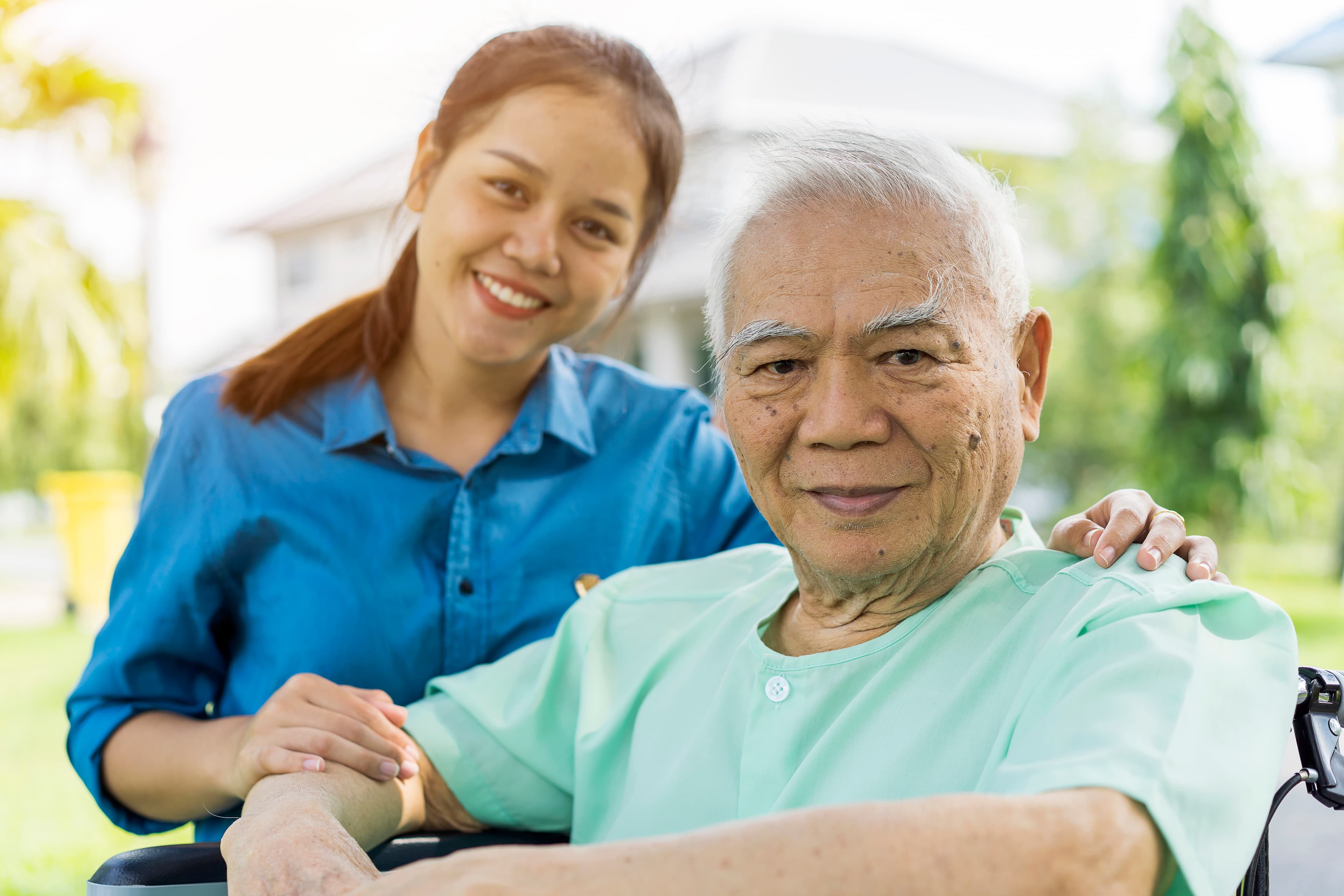Are you wondering how to become a caregiver for a family member? If so, you’re joining the ranks of more than 65.7 million Americans who serve their relatives.
When you’re just starting out as a caregiver, there’s a lot to learn. So much so that you might feel overwhelmed or unable to move forward. To help make the process easier (and eliminate decision fatigue) we’ve developed a list of tips for getting started. By following our six-step guide, you can take some of the pressure off and provide your family member with the support they need.
1) Determine your loved one’s needs. Caregiving isn’t one-size-fits-all. Everyone has different requirements, health problems, and expectations. For example, providing care for a family member who is relatively mobile and cognitively aware is much different than caring for someone who’s wheelchair-bound with dementia.
You don’t have to know everything, but it’s a good idea to gain an understanding of your loved one’s medical diagnoses and the medications they take. You might also want to study up on certain benefits, like Medicare. The coverage your loved one receives depends on their plan (Ie: Medicare Advantage, MediGap, or Part D).
2) Hone your skills. Once you have a comprehensive understanding of your loved one’s medical needs, start honing your caregiving skills. There’s no right or wrong way to do this, but we recommend:
Brushing up on proper hygiene procedures
Familiarizing yourself with cross-contamination prevention
Learning how to clean syringes, catheters, and other medical supplies
Rearranging your home for fall prevention
Reading books, magazines, and online publications that discuss caregiving
Enrolling in a basic CPR or life support course
Creating a monthly calendar that lists doctors appointments, meal times, and prescription medications
Meeting with your family member’s doctors and other health care providers
If your family member has special needs or a complex medical condition like Alzheimer’s, you might also want to enroll at CareAcademy. CareAcademy provides online caregiver training that’s approved in all 50 states.
The National Alliance for Caregiving is another excellent resource. They specialize in connecting new caregivers with resources and information.
3) Apply for financial assistance. Of the more than 67 million American caregivers, about 10 million go unpaid. This isn’t always a problem for families with multiple sources of income, but if you’re a caregiver and the sole provider for your family, there’s a potential for financial hardship. If you’re struggling to make ends meet, keep the lights on, and ensure everyone stays fed, help is available. There are several government programs that pay family members who care for veterans and people with disabilities. To learn more and to see if you qualify, click here.
4) Form your caregiving team. As a family caregiver, you’re a real-life superhero, but even superheroes need sidekicks. There’s only so much time in the day and you likely have other responsibilities outside of caregiving.
Try to come up with a list of friends, family members, or acquaintances who can assist you with daily tasks like driving to-and-from doctor’s appointments, filling prescriptions, and going grocery shopping. These people could be siblings, a significant other, co-workers you trust, or members of your church. Don’t be afraid to ask for help. People love stepping up, you just have to give them the opportunity.
5) Know where to find and buy necessities. Family caregivers often require special tools, just like a carpenter needs a hammer and nails. For example, if your loved one is incontinent or unable to use the toilet on their own, you might be responsible for changing their diapers. If your family member suffers from dysphagia, they might have special dietary restrictions.
You can purchase many necessities at the grocery store or a big box retailer, but that requires more running around. Here at Carewell, we carry the highest-quality caregiving products available, and you can order them from the comfort of home. What’s more, with our autoship program, you can have everything you need delivered directly to your doorstep on an ongoing basis. From adult diapers and catheters to nutritionally enhanced beverages and thick water, we’ve got you covered!
6) Make time for self-care. Last, but certainly not least, make time for self-care. “New caregivers will often focus their time, energy, and resources on helping and/or supporting a loved one. While this is expected, it can be a mistake,” said Rick Lauber, author of The Successful Caregiver’s Guide. “New caregivers should prioritize their own self-care. Eating well, sleeping regularly, exercising, and taking a break from caregiving work can all result in a far happier, healthier, and more effective family caregiver.”
As a caregiver, you’re bound to experience plenty of ups and downs. But if you use these six suggestions as a foundation, and build off it, both you and your loved one can thrive.



